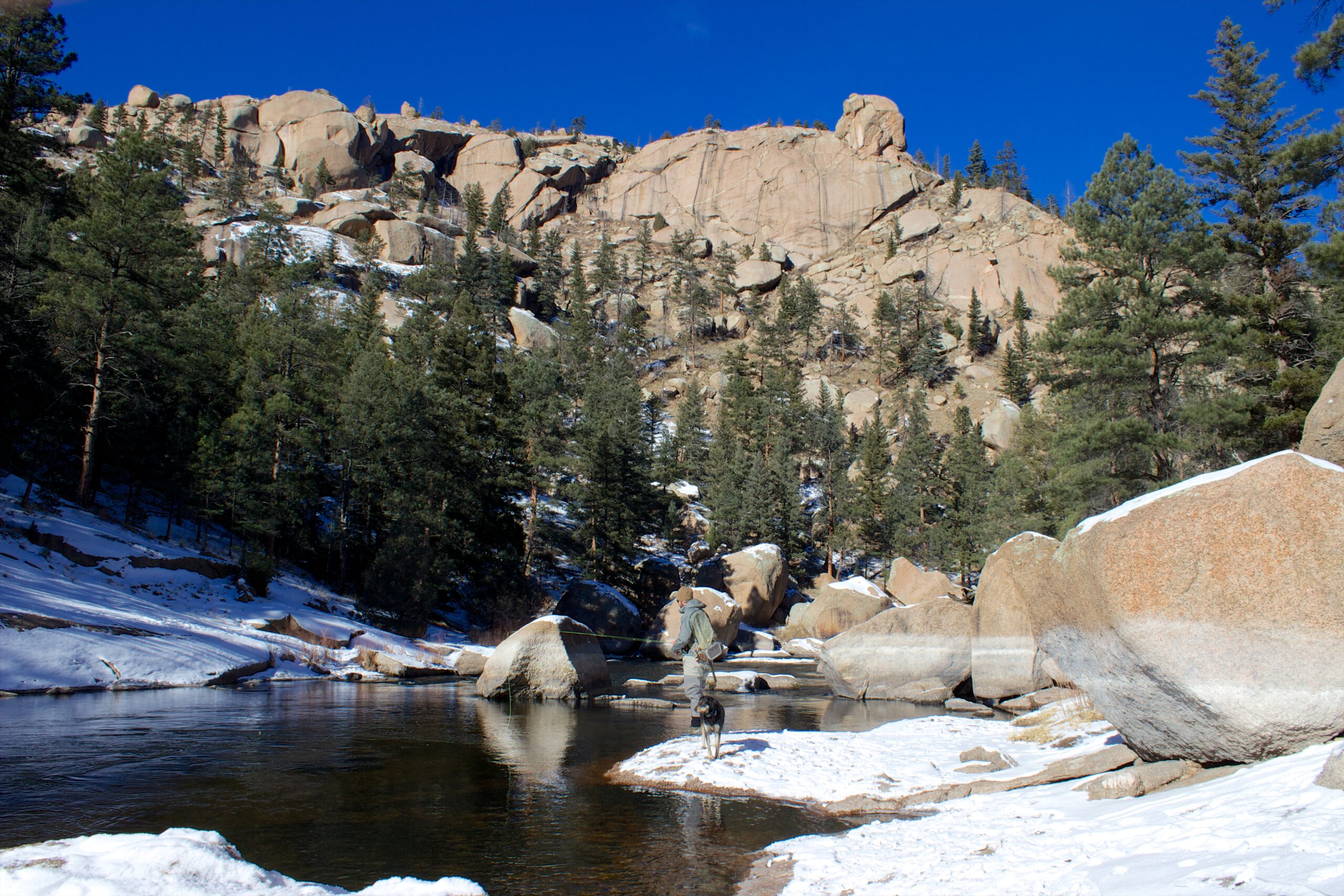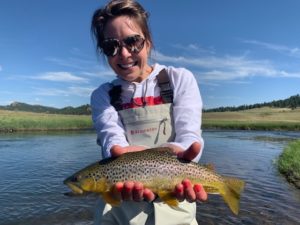
Up Your Winter Fly Fishing Success!
We are in that tough time of year where things around us seem to be entering deep freeze, thoughts of saltwater fly fishing are the only thing keeping us warm. Depending on where you live, there can still be some great fishing options in the form of winter trout streams. One variable most all rivers have in common during the winter season is that the flows are lower than normal. This does not mean they aren’t fishable, but a couple small changes in your game plan can really help increase your success.
1) Always approach the river slowly and from downstream of where you want to fish. This is the single most important piece of advice for fishing low water. In these low flows, it becomes much easier to see the fish but in return, they can also see you better. Low flows result in much spookier fish. You always want to approach the target from downstream, walking up. Fish can see great directly in front and above them, but not much behind them. Use this to your advantage and slowly walk upstream when looking for your next target. Make your casts from downstream of the fish, but do not let your line go directly over it. Ideally you are standing downstream and slightly to the side of your target. That way you can get your flies over the fish without the line spooking them.
2) The next most important piece of advice is to downsize everything. Your flies, indicator, tippet, all need to be smaller than what you would normally fish in higher water. Higher flows typically dislodge larger bugs into the current. In low flows, it is mostly smaller midges and mayflies that are on the menu. You will want to fish these flies on lighter line as well. “Low flow” is obviously a relative term based on each individual river but if you are fishing 3X throughout most of the year, consider downsizing to 4X or even 5X when the river is at its lowest. This will allow a more natural drift of the tiny flies and the smaller diameter is less likely to be detected by the fish. If using an indicator, you want to use one as small as possible. Fish are more aware of splashes or surface disturbances in periods of low flows. Because of this, I will often times fish yarn indicators as they land very soft and delicate on the water.
3) Focus on structure and deeper pools. As the water temperature decreases, so does the metabolism of the fish. This doesn’t mean they wont eat, just that they are going to be less aggressive in their feeding. During the winter time and periods of low flows, fish will seek out areas where they feel protected. They will not be actively feeding in riffles. Instead they will be in the deepest pools that still offer some moving current or in areas that offer structure for them to hide in.
4) Fish slow. Going along with the previous point, a cold blooded animal has a slower metabolism in the winter. They will not be as aggressive as they are in the summer time or periods of higher water. They won’t move far for a fly so you will have to throughly work a piece of water. Even if sight casting a specific fish, it may take multiple drifts until the fly perfectly gets into the fish’s zone giving him an offer he can’t refuse.
In my opinion, fishing is always more fun than not fishing, even if you are freezing while doing it! Don’t look out your window and let the weather keep you indoors. Bundle up and go enjoy some winter trout hunting!
For more advice on current winter conditions, check out our friends over at FlyCast!

